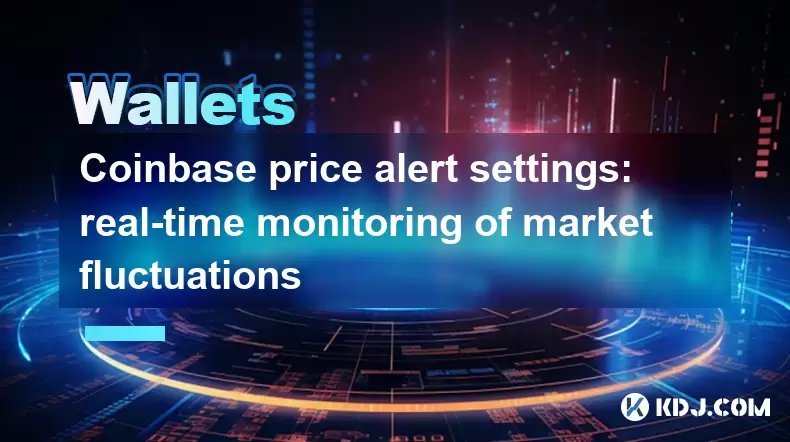-
 Bitcoin
Bitcoin $107,341.7259
0.15% -
 Ethereum
Ethereum $2,438.6204
0.70% -
 Tether USDt
Tether USDt $1.0003
-0.02% -
 XRP
XRP $2.1866
1.94% -
 BNB
BNB $649.0952
0.36% -
 Solana
Solana $150.9602
5.63% -
 USDC
USDC $0.9999
0.00% -
 TRON
TRON $0.2742
0.40% -
 Dogecoin
Dogecoin $0.1645
1.93% -
 Cardano
Cardano $0.5669
1.18% -
 Hyperliquid
Hyperliquid $37.8286
4.19% -
 Bitcoin Cash
Bitcoin Cash $491.4669
-2.74% -
 Sui
Sui $2.8150
3.06% -
 Chainlink
Chainlink $13.4184
2.91% -
 UNUS SED LEO
UNUS SED LEO $9.0809
0.27% -
 Avalanche
Avalanche $18.0295
2.60% -
 Stellar
Stellar $0.2396
1.19% -
 Toncoin
Toncoin $2.8587
0.13% -
 Shiba Inu
Shiba Inu $0.0...01160
2.59% -
 Litecoin
Litecoin $86.4192
1.45% -
 Hedera
Hedera $0.1486
1.19% -
 Monero
Monero $308.4324
0.87% -
 Polkadot
Polkadot $3.4202
1.43% -
 Bitget Token
Bitget Token $4.6436
-0.34% -
 Dai
Dai $0.9998
-0.02% -
 Ethena USDe
Ethena USDe $1.0002
0.00% -
 Uniswap
Uniswap $7.1527
3.29% -
 Pi
Pi $0.5357
-8.45% -
 Pepe
Pepe $0.0...09588
4.61% -
 Aave
Aave $259.9759
0.81%
How to export the transaction history of Bybit Wallet?
To export your Bybit transaction history, log in, navigate to Wallet, select a date range, and download the CSV file; repeat for all dates to get a complete record.
Apr 02, 2025 at 06:28 am

Understanding Bybit Wallet Transaction History
Bybit, a popular cryptocurrency exchange, offers a robust wallet system for managing your digital assets. Accessing and exporting your transaction history is crucial for tax reporting, auditing your investments, and generally maintaining a clear record of your cryptocurrency activities. This guide details the process of exporting your Bybit wallet transaction history. Remember to always prioritize security and only access your account from trusted devices.
Accessing Your Bybit Transaction History
First, you need to log in to your Bybit account. Ensure you're using your correct username and password, and be cautious of phishing attempts. Once logged in, navigate to your account's "Wallet" section. The exact location might vary slightly depending on Bybit's interface updates, but it's usually easily accessible from the main navigation menu. Look for a tab or section labeled "Transaction History," "Trade History," or something similar.
Navigating the Transaction History Interface
The Bybit transaction history interface displays a detailed list of your transactions. This includes the date and time of each transaction, the cryptocurrency involved, the amount transferred, the transaction fee, and the status (e.g., completed, pending). You can usually filter this data by date range, cryptocurrency, and transaction type (e.g., deposits, withdrawals, trades). Utilize these filters to easily locate specific transactions.
Exporting Your Transaction History
Bybit doesn't offer a direct download option for a comprehensive CSV or Excel file containing all your transaction history. Instead, the process usually involves manually selecting a date range and then downloading the data for that period. This means you may need to repeat the process multiple times to capture your entire history. This limitation is a common practice among many cryptocurrency exchanges.
Step-by-Step Guide to Exporting a Specific Date Range
- Log in to your Bybit account: Use your secure login credentials.
- Navigate to your Wallet: Find the "Wallet" section in the main menu.
- Access your Transaction History: Locate the "Transaction History" or similar section.
- Select a Date Range: Specify the beginning and end dates for the transactions you want to export. The available date range will likely be limited.
- Apply Filters (Optional): Refine your results by cryptocurrency or transaction type.
- Download the Data: Look for a download button or option, often represented by an icon resembling a downward-pointing arrow. The file format will usually be CSV or a similar format.
- Repeat for other date ranges: You'll need to repeat steps 4-6 for each date range to capture your complete transaction history. Note down the date ranges you've already downloaded to avoid duplication.
Understanding the Exported Data
The exported file (usually a CSV) will contain your transaction details. Familiarize yourself with the column headers to understand the data. Common columns include date, time, cryptocurrency, amount, transaction type, and fee. This data is vital for tax preparation and accounting purposes. Always keep a secure copy of your exported data.
Security Considerations
- Strong Password: Use a strong and unique password for your Bybit account.
- Two-Factor Authentication (2FA): Enable 2FA for enhanced security.
- Secure Device: Access your account only from trusted devices.
- Beware of Phishing: Be cautious of suspicious emails or websites claiming to be Bybit.
- Regularly Backup: Regularly backup your exported transaction history to a secure location.
Dealing with Large Transaction Histories
If you have a very extensive transaction history, exporting it in smaller chunks (using the date range filter) is recommended. This will make the process more manageable and reduce the risk of errors or data loss. Consider using spreadsheet software to combine the multiple downloaded files into a single, comprehensive record.
Troubleshooting Common Issues
If you encounter problems exporting your transaction history, check the following:
- Internet Connection: Ensure you have a stable internet connection.
- Browser Compatibility: Try using a different web browser.
- Bybit Website: Check for any announcements or maintenance notices on the Bybit website.
- Contact Bybit Support: If the problem persists, contact Bybit's customer support for assistance.
Frequently Asked Questions
Q: Can I export my entire Bybit transaction history in one go?
A: No, Bybit doesn't currently offer a single download option for your complete transaction history. You need to export it in smaller date ranges.
Q: What file format will my exported transaction history be in?
A: Typically, it's a CSV (Comma Separated Values) file, easily opened by spreadsheet software like Microsoft Excel or Google Sheets.
Q: What information is included in the exported file?
A: The file usually contains details like date, time, cryptocurrency, amount, transaction type, and fees for each transaction.
Q: What should I do if I have trouble exporting my transaction history?
A: First, check your internet connection and try a different browser. If the issue persists, contact Bybit's customer support.
Q: How often should I export my transaction history?
A: There's no single answer, but regularly exporting it (e.g., monthly or quarterly) is a good practice for maintaining accurate records. This is particularly crucial for tax purposes.
Q: Is my exported transaction history secure?
A: The security of your exported data depends on how you store it. Keep it in a secure location, ideally encrypted and backed up.
Disclaimer:info@kdj.com
The information provided is not trading advice. kdj.com does not assume any responsibility for any investments made based on the information provided in this article. Cryptocurrencies are highly volatile and it is highly recommended that you invest with caution after thorough research!
If you believe that the content used on this website infringes your copyright, please contact us immediately (info@kdj.com) and we will delete it promptly.
- Trump, Bitcoin, and Peter Schiff: A New York Minute on Crypto Chaos
- 2025-06-29 12:30:12
- BTC Price, BlackRock ETF, Fed Signals: Decoding the Crypto Crossroads
- 2025-06-29 12:30:12
- SEI Price Skyrockets Amid ETF Hype and Bullish Uptrend: What's Next?
- 2025-06-29 12:50:11
- Bitcoin Mining, Cryptocurrency, and Blockchain: A New York State of Mind
- 2025-06-29 13:10:11
- Dogecoin's Double Bottom: Is an Explosive Move Imminent?
- 2025-06-29 12:55:11
- Kitten Craze Online: Hunting for the Purr-fect Coin Purse
- 2025-06-29 10:30:12
Related knowledge

Coinbase price alert settings: real-time monitoring of market fluctuations
Jun 29,2025 at 07:00am
Setting Up Coinbase Price AlertsTo begin real-time monitoring of market fluctuations on Coinbase, users can utilize the built-in price alert feature. This function allows you to receive notifications when a cryptocurrency reaches a specific price point. To access this setting, open the Coinbase app or log in via the web platform. Navigate to the 'Prices...

How to stake cryptocurrencies on Coinbase? Benefits and risks
Jun 27,2025 at 06:36pm
Understanding Cryptocurrency Staking on CoinbaseStaking cryptocurrencies involves locking up digital assets to support the operations of a blockchain network, typically in return for rewards. Coinbase, one of the most popular cryptocurrency exchanges globally, offers staking services for several proof-of-stake (PoS) coins. Users can stake their holdings...

Differences between Coinbase Pro and Coinbase: platform function comparison and analysis
Jun 29,2025 at 08:21am
Overview of Coinbase and Coinbase ProWhen exploring the cryptocurrency trading landscape, users often encounter two platforms under the same parent company: Coinbase and Coinbase Pro. While both are operated by the same organization, they cater to different types of users and offer varying features. Coinbase is primarily designed for beginners and casua...

How to contact Coinbase customer service? Support channels and response times
Jun 28,2025 at 01:29pm
Contacting Coinbase Customer Service: Support Channels and Response TimesIf you're a user of Coinbase, reaching their customer service team may become necessary for various reasons, such as account verification issues, transaction disputes, or technical difficulties. Understanding the different support channels available and what to expect in terms of r...

Coinbase advanced trading function usage tutorial: limit orders and market orders
Jun 28,2025 at 09:07pm
Understanding the Difference Between Limit Orders and Market OrdersWhen using Coinbase's advanced trading features, it is crucial to understand the fundamental difference between limit orders and market orders. A market order executes immediately at the best available price on the market. This type of order ensures that your trade goes through quickly, ...

How to sell Bitcoin on Coinbase? Detailed transaction steps
Jun 29,2025 at 04:22am
Setting Up Your Coinbase Account for TransactionsBefore you can sell Bitcoin on Coinbase, you must ensure your account is fully set up and verified. Coinbase requires identity verification to comply with regulatory standards. This process involves uploading a government-issued ID, confirming your address, and sometimes submitting a selfie holding the ID...

Coinbase price alert settings: real-time monitoring of market fluctuations
Jun 29,2025 at 07:00am
Setting Up Coinbase Price AlertsTo begin real-time monitoring of market fluctuations on Coinbase, users can utilize the built-in price alert feature. This function allows you to receive notifications when a cryptocurrency reaches a specific price point. To access this setting, open the Coinbase app or log in via the web platform. Navigate to the 'Prices...

How to stake cryptocurrencies on Coinbase? Benefits and risks
Jun 27,2025 at 06:36pm
Understanding Cryptocurrency Staking on CoinbaseStaking cryptocurrencies involves locking up digital assets to support the operations of a blockchain network, typically in return for rewards. Coinbase, one of the most popular cryptocurrency exchanges globally, offers staking services for several proof-of-stake (PoS) coins. Users can stake their holdings...

Differences between Coinbase Pro and Coinbase: platform function comparison and analysis
Jun 29,2025 at 08:21am
Overview of Coinbase and Coinbase ProWhen exploring the cryptocurrency trading landscape, users often encounter two platforms under the same parent company: Coinbase and Coinbase Pro. While both are operated by the same organization, they cater to different types of users and offer varying features. Coinbase is primarily designed for beginners and casua...

How to contact Coinbase customer service? Support channels and response times
Jun 28,2025 at 01:29pm
Contacting Coinbase Customer Service: Support Channels and Response TimesIf you're a user of Coinbase, reaching their customer service team may become necessary for various reasons, such as account verification issues, transaction disputes, or technical difficulties. Understanding the different support channels available and what to expect in terms of r...

Coinbase advanced trading function usage tutorial: limit orders and market orders
Jun 28,2025 at 09:07pm
Understanding the Difference Between Limit Orders and Market OrdersWhen using Coinbase's advanced trading features, it is crucial to understand the fundamental difference between limit orders and market orders. A market order executes immediately at the best available price on the market. This type of order ensures that your trade goes through quickly, ...

How to sell Bitcoin on Coinbase? Detailed transaction steps
Jun 29,2025 at 04:22am
Setting Up Your Coinbase Account for TransactionsBefore you can sell Bitcoin on Coinbase, you must ensure your account is fully set up and verified. Coinbase requires identity verification to comply with regulatory standards. This process involves uploading a government-issued ID, confirming your address, and sometimes submitting a selfie holding the ID...
See all articles

























































































